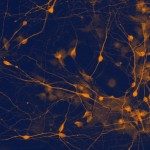Lien vers Pubmed [PMID] – 15549333
Acta Neuropathol. 2005 Feb;109(2):159-64
Tau2 antibody recognizes a phosphorylation-independent epitope that is pathologically modified as tau protein is phosphorylated to form neurofibrillary tangles of Alzheimer’s disease (AD). Similar modification of tau2 epitope can be induced even in the absence phosphorylation of tau, as we first demonstrated in ischemic foci and in glial cytoplasmic inclusions (GCIs) of multiple system atrophy. This modification of tau2 epitope is distinguishable from those observed in degenerative tauopathies because (1) it is a conformational change, which is reversible upon exposure to a detergent; (2) it shows an absence of fibrils composed of phosphorylated tau protein; and (3) it is characterized by the lack of immunohistochemical labeling by anti-tau antibodies other than tau2. In this study, we expanded this observation to inflammatory foci of different pathologies (human immunodeficiency virus encephalopathy, progressive multifocal leukoencephalopathy or multiple sclerosis) by examining formalin-fixed, paraffin-embedded sections immunostained with a panel of anti-tau antibodies. It was found that tau2 was the only anti-tau antibody that immunolabeled microglia/macrophages in these lesions, and this immunoreactivity was reversibly diminished upon exposure to a detergent. Exclusive apparition of tau2 immunoreactivity in these cells without neurofibrillary pathology may be a secondary event shared with ischemic foci and GCIs. It is, however, related to a unique conformational state of tau, possibly grouped under the name of “tautwopathy”, that may represent an initial stage of tau deposition distinct from degenerative tauopathies characterized by fibrils composed of phosphorylated tau protein.
